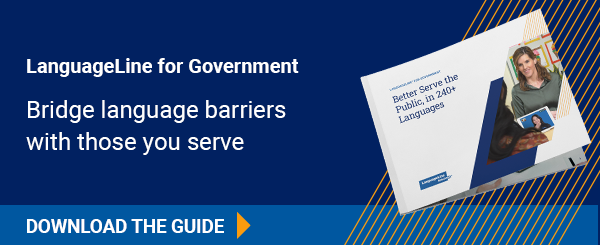
Mayra Calderon Diaz’s kids are all enrolled in Savannah (Georgia) public schools, between grades 2 and 7.
Born in Mexico, the mother of three says she has tried to be as involved as possible in her children’s education, but a persistent language barrier has made that difficult. Over the years, communicating with front desk staff posed challenge after challenge, and meetings with teachers came with a $50 price tag to cover the cost of bringing an interpreter with her.
Once, a communication issue kept her daughter off the school bus route for weeks. During the pandemic, there was difficulty keeping up with the schools’ announcements about the shift to remote learning.
“We were lost,” she said.
Calderon Diaz’s struggles were far from unique. According to U.S. Census data, Savannah’s Chatham County saw its Hispanic population surge by 66% from 2010 to 2020, from about 14,000 residents to nearly 24,000. The county’s Latino growth rate exceeded the state’s (32%) and the nation’s (23%) during that time span.
Official data shows 15% of the district’s student body is now Hispanic. This school year, it has rolled out new initiatives targeting the concerns of immigrant families like Calderon Diaz’s.
“I think all districts look at their data (to see) what the needs of our students are,” said Bernadette Ball-Oliver, deputy superintendent for teaching and learning in the Savannah-Chatham County Public School System (SCCPSS).
According to federal data compiled by the Migration Policy Institute, Georgia had the country’s sixth largest population of English learners in K-12 education as of the fall in 2020. Most are in Atlanta, but communities statewide are seeing their English learning population grow.
Investing nearly $1 Million in ELLs
Over the summer, the Savannah-Chatham district announced an $835,000 investment in its English language learners. The bulk of the funding will go towards hiring new teachers of English for Speakers of Other Languages (ESOL),as well as interpreters and a bilingual social worker. Until this school year, just one SCCPSS high school out of 11 provided ESOL services.
Also in the works is a new International Welcome Center, which Ball-Oliver says will help parents register their children in school and provide wraparound services, connecting families to community resources. Those moves follow last year’s implementation of the LanguageLine, which provides on-demand video and audio-only interpretation for students, families, and administrators in more than 240 languages.
SSCPSS’ announcement of the nearly $1 million grant comes after local Latino advocates had spoken up about immigrant parents’ dissatisfaction over their interactions with the school district. Last spring, the Savannah-based nonprofit Migrant Equity Southeast (MESE) published a report highlighting “the disparities of equitable access to resources for students and communities from whom English is their secondary language.”
A Need to Innovate
Citing below average student achievement rates for English language learners and the need for school districts to “innovate and transform their practices” as student bodies diversify, the MESE report called for more bilingual staffing and more robust engagement with immigrant families.
After surveying over 150 Spanish-speaking parents in Savannah, MESE found that over 90% of respondents wished they had more opportunities to be involved in their children’s education.
Approximately two-thirds said they have had to rely on their kids to translate for them during interactions or discussions with SSCPSS staff at school. More than half indicated they were not satisfied with parent-school communication, with many highlighting English-only notices or updates from the district. Nearly half of the parents said they were unfamiliar with the concept of a Parent Teacher Association.
A Long-Standing Priority
Ball-Oliver said maximizing parents’ ability to connect with educators and administrators is a longstanding priority for district leadership.
“Having the parental involvement piece is critical … We’re partners in this,” she said. “A lot of times, we rely on parents to give us information that helps inform what we do in school. And parents rely on us to give them information that can inform how they support their child academically at home.”
Many of the district’s new investments into better serving Hispanic parents are still pending, but Calderon Diaz said she has noticed an improvement during the first semester of this school year, with more Spanish-speaking staff at her disposal.
“Things are changing,” she said.
Migrant Equity Southeast, the Latino-serving nonprofit, has been active since 2013 but saw its role expand during the pandemic, when it mobilized to help families cover basic needs, including food and rent assistance for immigrants who didn’t qualify for government aid.
“We realized that all of their issues had one thing in common: language. [Parents] wanted to advocate for their children. But because of language [barriers], they couldn’t do it,” said Daniela Rodriguez, executive director at MESE.
LanguageLine Can Help
LanguageLine is proud to assist these schools and ones like it across North America. It brings us immense joy to partner in elevating the trajectory of young people.
Most educators are surprised to learn that everything they need to provide on-demand interpretation is already in their classrooms. Interested? Please contact us for a free consultation.

